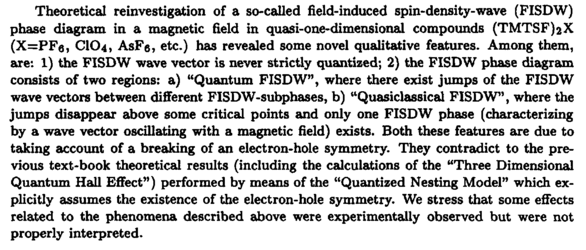|
|

| VOLUME 72 (2000) | ISSUE 3 |
PAGE 205
|
Does the "quantized nesting model" properly describe the magnetic-field-induced spin-density-wave transitions?
Lebed A.G.
ID: 71.70.Kn

|
|


